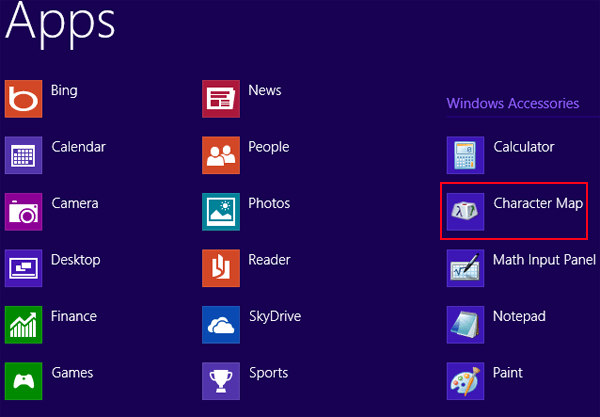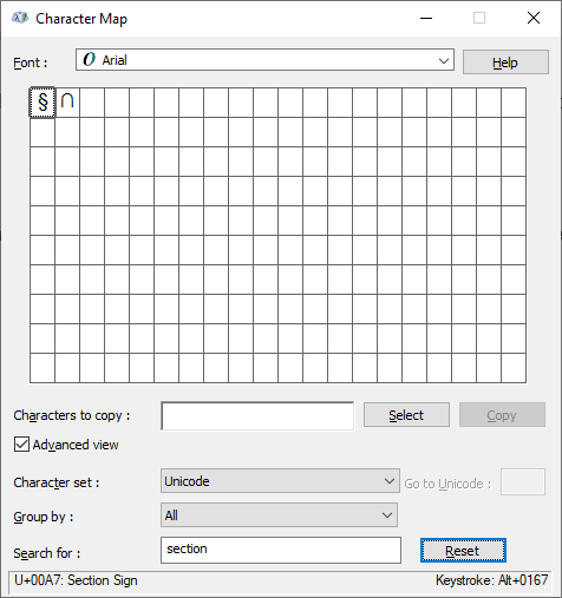
There is at top the template group selector. Right click into the view and click on context menu item Modify templates to open the Modify Templates dialog window. Language templates are not of interest for a character table. There can be seen most likely a tree with Global with the global templates (none by default) and the name of the currently used layout for templates associated with currently used layout and perhaps also a language template if the active file is syntax highlighting with a language for which also language templates are defined.


#Ultra character map windows windows#
In toolbar/menu mode with traditional menus click in menu View in submenu Views/lists on menu item Template list (UE for Windows ≤ 28.20) respectively in submenu Lists on menu item Template list (UE for Windows ≥ 2022.0). In toolbar/menu mode with contemporary menus click in menu Layout on menu item Templates to open this view. In ribbon mode click on ribbon tab Layout in third group Lists on check box item Templates to open the Template List view. So on definition of the most often needed characters as global templates it would be very efficient to use chords to insert them like Ctrl+L (literal) or Ctrl+Shift+T (template) as first key and a character specific key for the appropriate template respectively character. The first fifty global templates can be inserted into active file also by pressing the hotkey or chord (multi-key assignment) assigned by the user in the key mapping configuration dialog to the commands User template x with x being a number in range 0 to 49. Templates can be inserted also from within the document window without opening the Template List on having the smart templates feature enabled in configuration as it is by default. Templates are the enhanced version of tags.
#Ultra character map windows code#
(Unicode code point value + character name would be a good description.)ĭouble clicking on a tag in the created group selected in the Tags List view inserts the defined character. A tag is in this case the single character to insert and a description of user´s choice. There can be created a new group with button New group with a custom name to which custom tags can be added for creating a custom character map. Right click into the view and click on context menu item Modify tags to open the Tag List Modify dialog window. The group HTML - Special Characters is a "character table" for inserting characters with their HTML entities into an HTML/XHTML file.

There can be seen at top already several groups. In toolbar/menu mode with traditional menus click in menu View in submenu Views/lists on menu item Tag list (UE for Windows ≤ 28.20) respectively in submenu Lists on menu item Tag list (UE for Windows ≥ 2022.0). In toolbar/menu mode with contemporary menus click in menu Layout on menu item Tags to open this view. In ribbon mode click on ribbon tab Layout in third group Lists on check box item Tags to open the Tags List view. There are multiple solutions available for a custom character table using tags, templates or macros. However, every user can create its own character tables. Well, in real it shows the 256 characters encoded using the Windows code page defined by the user according to country/region configured for the user account. The ASCII Table view is also in UltraEdit for Windows v2022.0.0.102 still an ASCII table.


 0 kommentar(er)
0 kommentar(er)
